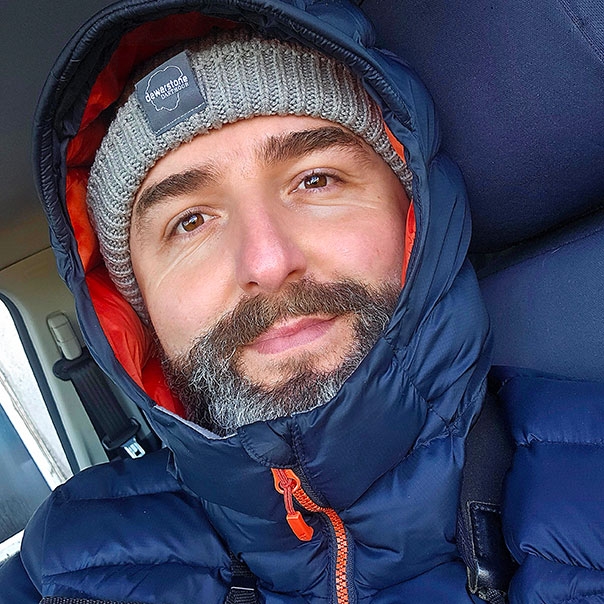Kane Brides
Senior Research Officer, Wetland Bioscience

About me
I am an ornithologist and Senior Research Officer in the Conservation Evidence department at WWT Slimbridge. Much of my work has focused on the long-term monitoring of waterbird populations, providing vital evidence on trends in abundance, productivity, and survival. More recently, my research has centred on diagnosing population declines, identifying the drivers behind these changes, and helping to develop practical solutions to support species recovery.
My fieldwork has taken me across the UK and internationally – from British wetlands to expeditions in China, Russia, Bulgaria, and the Middle East – where I have studied some of the world’s most threatened migratory birds. Alongside this, I have led and contributed to capacity-building initiatives that strengthen waterbird monitoring and research across flyways, sharing knowledge and skills to support species conservation and recovery.
My experience also includes the design and delivery of large-scale bird capture, ringing, and tracking programmes. I hold the highest category of bird ringing licence in the UK, as well as licences in four other countries, and am an authorised cannon-netter. I also hold a Visiting Researcher position at the Chinese Academy of Sciences, Beijing, strengthening collaborations on the conservation of migratory waterbirds across Eurasia and the East Asian–Australasian Flyway.
My role
At WWT, I am responsible for project management and delivery across a portfolio of conservation initiatives, including the Severn & Avon Vales Curlew Project, WWT’s National Curlew Recovery Programme, and monitoring saltmarshes within the Saltmarsh Solutions programme. I contribute to the development of new projects and research priorities, and I am actively involved in the preparation of scientific papers to inform conservation practice. In addition, I manage WWT’s fieldwork staff within our species recovery programmes and oversee the organisation’s bird capture, ringing, and GPS tracking work. I am also committed to communicating the importance of wetlands and waterbirds to a wide range of audiences, including through writing, social media, and television.
Experience and interests
- Extensive experience in ringing birds, particularly waterbirds. Holds ‘A/S’ permit and cannon-netting licence.
- Experience in the fitting of various GPS tracking devices to different bird species.
- Experience in implementing and coordinating large volunteer-based surveys.
- Fieldwork experience with wildfowl, shorebirds and seabirds including surveys and ringing.
Publications
- Brides, K, K.A. Wood, C. Hall, B. Burke, G, McElaine, O, Einarsson & Rees, E.C. 2021. The Icelandic Whooper Swan Cygnus cygnus population: current status and long-term (1986–2020) trends in its numbers and distribution. Wildfowl, 71(71), 29-57.
- Brides, K, C. Mitchell, A. Sigfússon & S. N.V. Auhage. 2018. Status and distribution of Icelandic-breeding geese: results of the 2017 international census. Wildfowl & Wetlands Trust Report, Slimbridge.
- Brides, K., K.A. Wood, R.D. Hearn & T.P.M. Fijen. 2017. Changes in the sex ratio of the Common Pochard Aythya ferina in Europe and North Africa. Wildfowl 67: 100-112.
- Brides, K., Mitchell, C. & Hearn R.D. 2013. Mapping the distribution of feeding Pink-footed Geese in England. Wildfowl & Wetlands Trust / Natural England Report, Slimbridge. 43pp.
- Wood, K.A., J.L. Newth, K. Brides, M. Burdekin, A.L. Harrison, S. Heaven, C. Kitchin, L. Marshall, C. Mitchell, J. Ponting, D.K.Scott, J. Smith, W. Tijsen, G.M. Hilton & E.C.Rees. 2018. Are long-term trends in Bewick’s Swan Cygnus columbianus bewickii numbers driven by changes in winter food resources. Bird Conservation International.